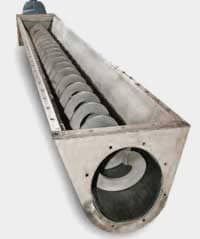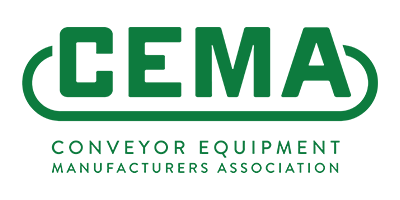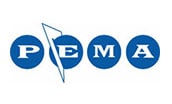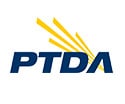Choosing a Screw Conveyor for Your Tough Material
Choosing a Screw Conveyor to Handle Your Tough Material
A screw conveyor is one of the most versatile and cost-effective mechanical conveyors for handling dry bulk solids. The conveyor provides enclosed transfer while moving materials-horizontally, vertically, or at an incline and can deliver materials from one or more inlet points to one or more discharge points. The screw conveyor’s wide range of available configurations, components, and construction materials makes the equipment suitable for transferring even the most challenging dry bulk materials.
A screw conveyor consists of a screw mounted in an enclosed U-shaped trough (or tubular housing). The screw can have one or several sections, and each section consists of flighting mounted on a pipe. At one end, the screw is connected to a rotating drive shaft, and the opposite end is connected to an end shaft. The screw is supported by bearings at the trough ends. If the screw conveyor is long enough to require more support, hanger bearings can be suspended from the top of the trough to support the screw at points between the screw sections.
Selecting a screw conveyor to handle your challenging material is really a matter of choosing the right combination of components and construction materials. While you’ll need to work closely with your conveyor supplier’s engineering department for technical advice during this process, here are some basics for making the right choices for handling your tough material in a screw conveyor.
Fluidizable Materials
Fluidizable materials – that is, materials that tend to flow like liquids when aerated or mechanically agitated – can flow uncontrollably through a screw conveyor. Examples include alumina, Portland cement, powdered cocoa, fly ash, limestone dust, and talc. To handle this kind of material, select a larger diameter screw with a short pitch (that is, a short distance between flights), such as a short-pitch or half-pitch single-flight screw, as shown in Figure 1. The short pitches in these screws will slow material flow through the conveyor. Running the screw conveyor at a slower speed will also reduce flooding. If your material will discharge to a downstream weighing device, you can use a doubleflight shortpitch screw (which has two rows of flighting around the pipe) to better control the material’s flow and minimize surging, thus providing more uniform discharge to the weighing device.
Non-free-flowing Materials
Non-free-flowing materials include viscous or sticky materials, materials that tend to mat or interlock, and those that tend to pack. Examples of viscous or sticky materials include green malt, sewage sludge, and wet beet sugar. Such a material can collect in the joint between the screw flight and pipe and build up on the flight and pipe surfaces, reducing the conveying capacity. To handle a viscous or sticky material, you can choose a single-flight ribbon screw, which has an open space between the flight and pipe to eliminate buildup on the screw, or a shaftless screw, which has a helical screw without a pipe at the center, eliminating any area for material to collect. These screws are shown in Figure 2.
Materials that tend to mat or interlock, such as aluminum chips, mica flakes, dry bagasse, wood chips, and paper pulp, typically have irregular particle shapes and sizes. Smaller particles and the smaller ends of irregularly shaped particles – for instance, a wood chip’s thinnest edge – can become wedged in the clearance between the flight tip and trough wall. This can jam the conveyor and increase the conveyor’s frictional horsepower requirement, potentially leading to a drive overload, and can cause bending and torque loads on the screw that eventually lead to the screw’s mechanical failure. If your material tends to interlock, choose a conveyor with heavyduty construction and components, such as a screw with an oversized pipe and thicker flights, and feed the material at a controlled rate to the conveyor rather than floodfeed it. Your conveyor supplier may also recommend either enlarging or reducing the flighttiptotrough clearance to prevent materials from becoming trapped in it.
Materials that tend to pack under pressure, such as carbon black, hydrated lime, dried milk, talc, gypsum, and wood flour, can cause many of the same problems as materials that tend to interlock. These particles tend to compact into a mass inside the conveyor, creating high flow resistance that can increase the conveyor’s frictional horsepower requirement and cause bending and torque loads on the screw. If your material tends to pack, select a conveyor with heavyduty construction and heavier components that can withstand greater flow resistance. You can also choose a singlecutflight standardpitch screw, as shown in Figure 3, which acts like a chopper to break up compacted material and keep it moving through the conveyor. If you’re conveying a fine material, such as gypsum or stucco, you can prevent it from packing by using fluidizing pads or another aeration device in the conveyor. If the material has large fibrous particles, use a vibratory pan feeder or other vibrating feeder to keep the material from compacting as it’s fed to your screw conveyor.
Abrasive Materials
Abrasive materials, such as cement clinker, iron ore, foundry sand, whole soybeans, and titanium dioxide, can quickly wear the screw conveyor’s components. If your material is abrasive, you can specify a conveyor trough, screw, bearings, and other components made of abrasion-resistant materials, such as hardened or hard-surfaced steel. Conveying your material at a nominal depth of about 15 percent of the conveyor’s total volume and running the conveyor at low speed will also reduce abrasive wear.
Hygroscopic Materials
Hygroscopic materials, such as salicylic acid, dried milk powder, soap granules, and salt, readily absorb moisture and can build up on screw flight surfaces and collect at the joint between the flight and pipe. If your material is hygroscopic, select a vaporand dusttight screw conveyor with shaft seals and other seals that will prevent moist air from contacting the material. You can also select a single-flight ribbon screw or shaftless screw (Figure 2) to prevent material buildup. If your hygroscopic material is hot, such as a powder that’s discharged from a dryer, you need to keep the screw conveyor warm to prevent the material from contacting cold air and producing condensation that can moisten it. You can do this by choosing a conveyor with a heat jacket that circulates a heating medium around the trough, heat tracing (electric wiring) that transfers heat through the trough walls, or insulation. In some cases, you may also need to add a purging system to the conveyor to continuously draw moisture off the material.
Toxic and Explosive Materials
Toxic and explosive materials are hazardous and must be handled in a screw conveyor that’s carefully chosen to contain them. Toxic materials, such as asbestos, arsenic, benzene hexachloride, caustic soda, and lead oxide, give off toxic fumes or dust that can escape the screw conveyor and pose a health hazard to your workers. To handle a toxic material, choose a screw conveyor with a vaporand dusttight housing. The conveyor should have extremely tight shaft seals, such as gaspurged seals or flangetype gland seals with multiple rings of packing material. Also use a dust control system that captures and removes toxic fumes and dust at the conveyor discharge.
An explosive material contains explosive dust and can produce a dust cloud inside the screw conveyor that leads to a fire or explosion, potentially injuring your workers and damaging the screw conveyor, nearby equipment, and the plant. Examples of explosive materials containing explosive dust are calcium carbide, seeds and grains, flour, coal, potassium nitrate, sulfur, and tobacco. For handling such a material, choose a vapor- and dust-tight screw conveyor designed to withstand explosion pressures. The conveyor’s flight-tip-to-trough clearance should be large enough to prevent metal-to-metal contact during conveying. The conveyor can also be equipped with a trough and screw made of dissimilar metals, which are less likely to produce sparks, or the conveyor can be constructed of nonsparking metals, such as brass or bronze. Also use a dust control system to capture and remove dust at the conveyor discharge. Depending on your material and operating conditions, you may also purge the conveyor with an inert gas, such as nitrogen.
Partnering With Your Supplier
Expect to work closely with your screw conveyor supplier’s engineering department to ensure that the conveyor you choose will reliably handle your material. The supplier has years of experience designing conveyors to handle materials like yours. You’ll need to provide detailed information about your material’s characteristics and your desired conveying rate, expected conveyor usage, operating conditions, and other factors during this process. The supplier can run screw conveyor tests with your material to demonstrate that the conveyor components and construction materials can successfully handle your challenging material and meet your conveying goals.










